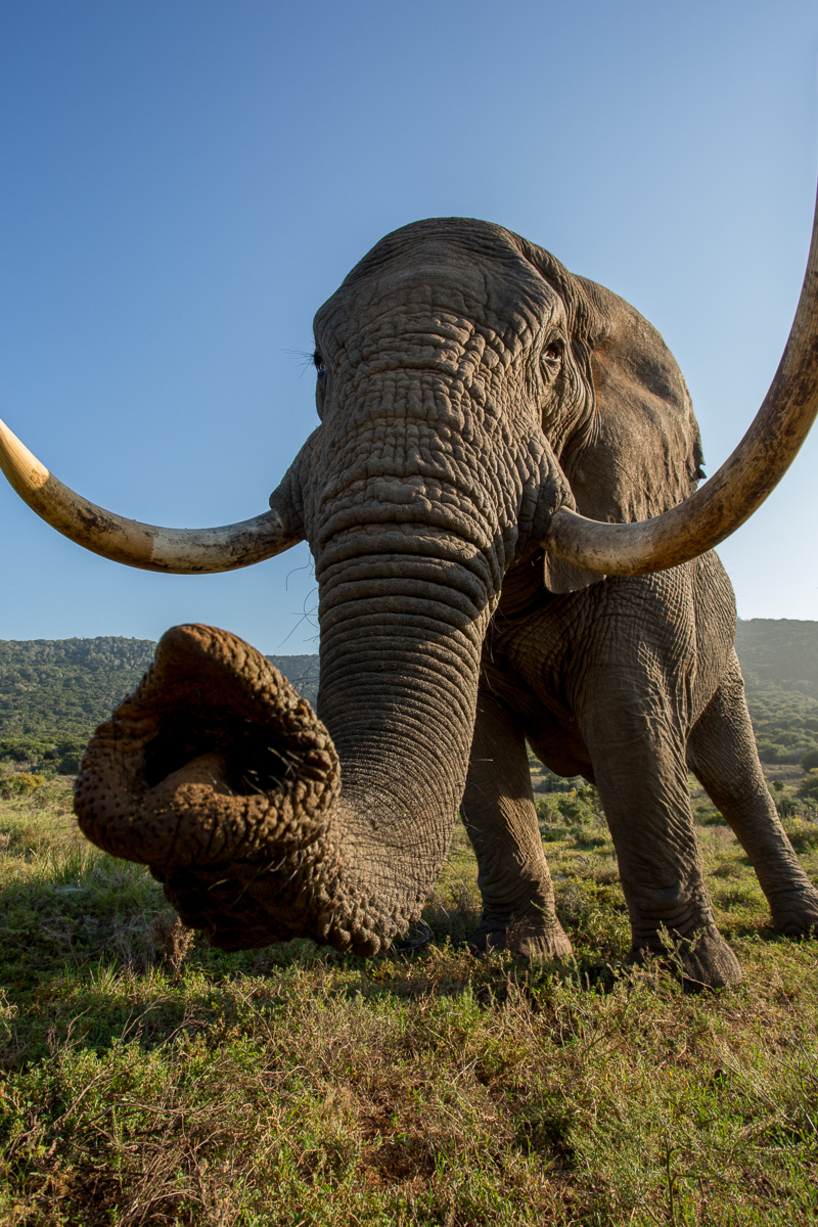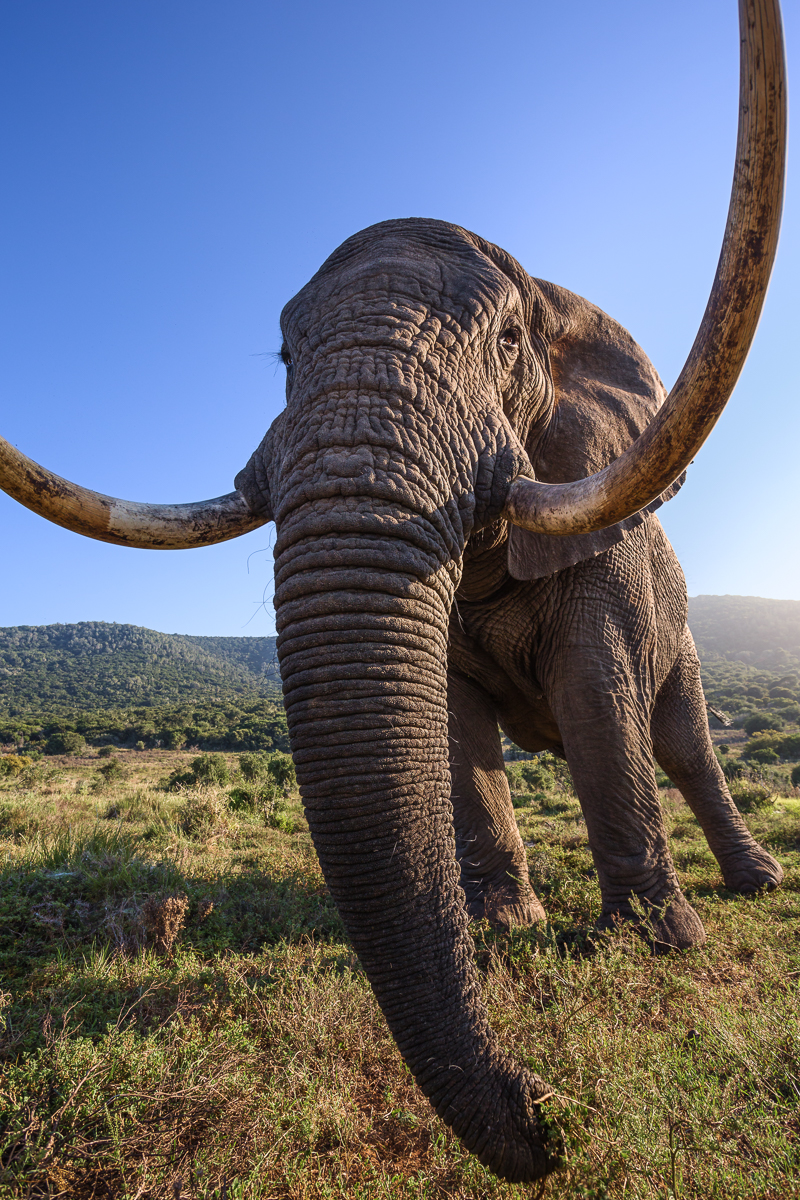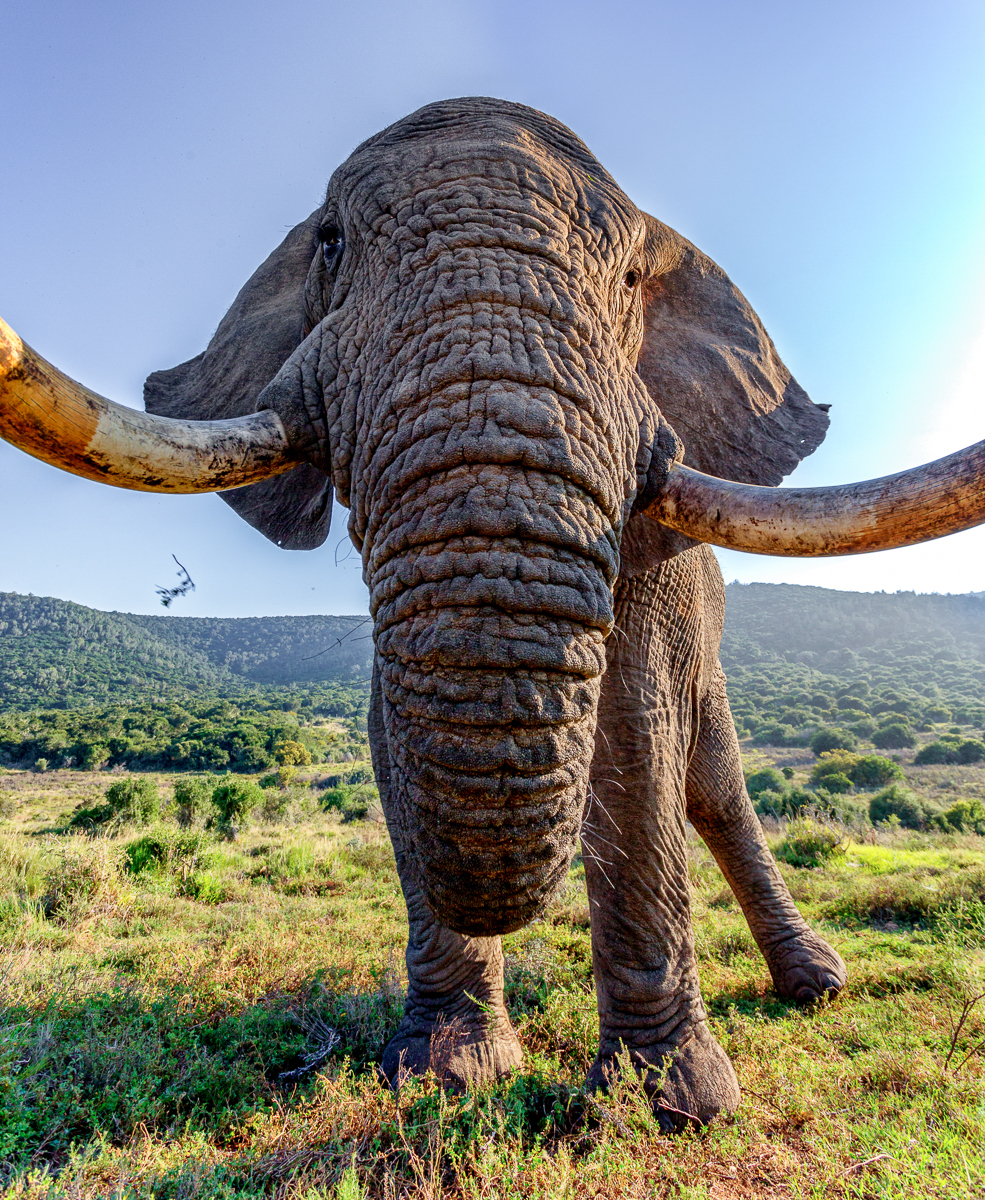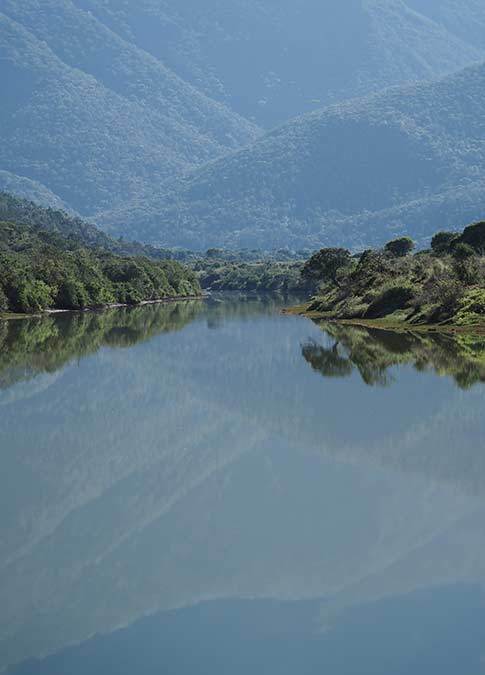UK Times Features Kariega Elephant

This wonderful image of an African bush elephant or African savanna elephant (Loxodonta africana) was published in the British daily newspaper The Times on 3 January 2019. The UK Times featured this photograph of a Kariega elephant taken by talented photographer and field guide Brendon Jennings. Brendon has been a guide at our malaria-free South African safari reserve for many years, and managed to get closer than most to photograph this African elephant bull.
Three Species of Elephants: Populations All Declining
Elephants are largest the world's terrestrial mammals and belong to the family Elephantidae. There are three species of elephants: African bush elephants, African forest elephants and Asian elephants. The largest of these is the African bush or savannah elephant which are regularly seen by guests on safari at Kariega Game Reserve.
The African forest elephant (Loxodonta cyclotis) is only found in the Congo Basin and the endangered Asian elephant (Elephas maximus) is found in very few locations, including small areas in India, Sumatra, Borneo and Sri Lanka.
Both species of African elephant are listed as vulnerable by the International Union for Conservation of Nature (IUCN). The Asian elephant is classed as endangered. According to the World Wildlife Fund (WWF), there are less than 400,000 elephants left in Africa. This number has dropped dramatically in less than 100 years due to poaching and conflict for land. In 2016, the IUCN reported that Africa’s elephant population had seen its worst decline in 25 years, mostly as the result of intensified poaching for ivory.
We are thankful that the African elephant numbers at Kariega Game Reserve are increasing and new calves are born each year. Read these stories for more information about Kariega's elephants:
- History of the Kariega Elephants
- Eastern Cape Elephant Habitat Increases
- Elephants and their Young at Kariega
- Five Fascinating Elephant Photos and Facts

Incredible Elephant Tusks & Illegal Ivory Trade
The tusks of an elephant are their elongated and continuously growing front teeth or second incisors. African elephants start growing tusks when they are about 6-12 months old and they continue to grow at a rate of about 15 centimeters (6 inches) per year. The tusks of an African elephant grow outwards on both males and females.
African elephant tusks have many uses including moving trees and branches, marking trees, protecting their trunks, stripping bark, digging for roots and water. Bull elephants also use their trunks to attack and defend when fighting for territory or females. It is wonderful to watch a herd of African savannah elephants browse and graze for food on the African plains while on safari at Kariega.
Elephant tusks can reach over two meters (6.5 feet) and can weigh over 50 kilograms (110 pounds) each.
Elephants can be right or left-tusked, just like humans are right or left-handed. The preferred tusk is known as the master tusk and is usually slightly shorter, rounded at the tip and more worn down.
One of the biggest threats to African elephant populations is the illegal ivory trade, as the animals are poached for their tusks. Despite recent moves to close it down, the United States of America (USA) still has the second largest domestic ivory market behind China. Hong Kong remains the world's largest market for ivory.
Facts About Elephant Trunks
An elephant's trunk is a wonderfully versatile tool that is used for breathing, smelling, touching, grasping, and making sounds. While on a Kariega safari we hope that you saw (or will see) elephants using their trunks to eat and smell. You may not get as close as Brendon did when he photographed the Kariega elephant smelling his camera!
Read one of our most popular blogs about five interesting facts about elephant's trunks.

Kariega Elephant Photos Featured
We have a number of talented guides and photographers at Kariega Game Reserve. A photograph of two elephant with their trunks locked in an embrace was also featured in the Australian Daily Mail. See the photograph here: https://www.dailymail.co.uk/travel/travel_news/article-2995763/Elephants-lock-trunks-affectionate-display-Kariega-Game-Reserve-South-Africa.html.
We would love to see your Kariega elephant photographs and videos. Please share them with us on Facebook, Instagram, Twitter and YouTube.









